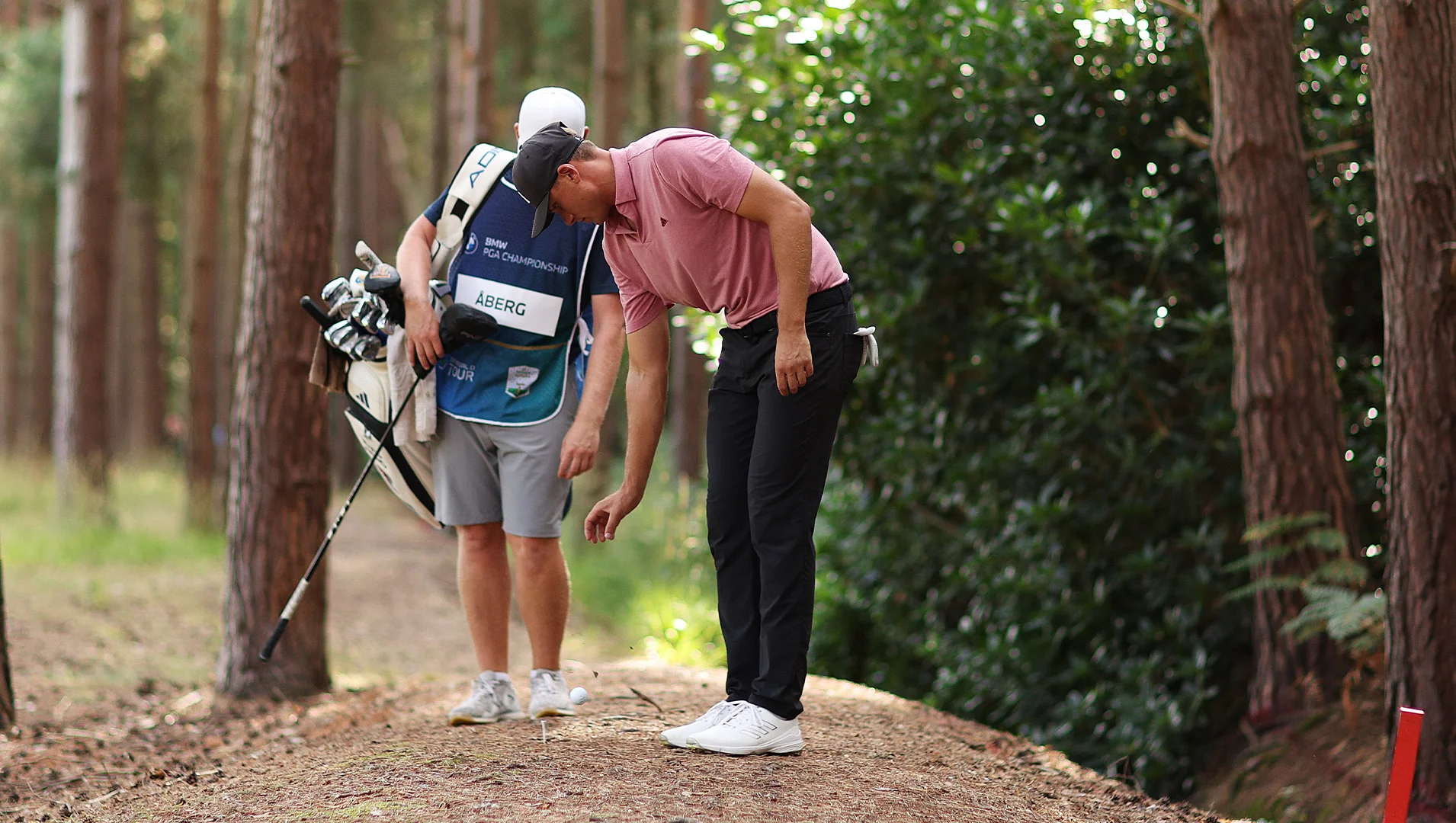Rules of Golf
Taking Free Relief under the Rules | Rules Education
05 Oct 23
3 mins
You hit a perfect drive down the middle of the fairway only to find that you have to stand in a puddle of water to play your ball, or you hit your approach to the green just a little too long and it comes to rest on a cart path. It doesn’t feel fair to have to play your shot from these positions, so what can you do?
These are two examples of conditions that are often found on a golf course that are not normally meant to be part of the challenge of the sport. These types of conditions are known collectively as abnormal course conditions and also include; holes made by animals, areas marked as ground under repair, immovable obstructions (such as artificially surfaced cart paths) and temporary water (such as puddles). As abnormal course conditions are not part of the challenge, the Rules of Golf give you the option to take free relief under Rule 16. This is one of the most frequently used Rules and one that is worth taking your time to understand.Watch this animation as it explains more about abnormal conditions and when you are allowed to take free relief from them:
When Relief is Allowed from Abnormal Course Condition
You are allowed free relief from an abnormal course condition (ACC) when you have ‘interference’ from it, which means:
- When your ball touches or is in an ACC, or
- An ACC will physically interfere with the area where you intend to stand, or
- An ACC will physically interfere with your area of intended swing.
Remember:
- Even if you have interference from the likes of a cart path, or an animal hole, it doesn’t mean you are entitled to a perfect stance and lie after you take relief. To take relief you must find the nearest point to where your ball lies where you no longer have interference from the condition and then drop within one club-length of that point, no nearer the hole.
- If your ball was in the general area, your nearest point of complete relief must also be in the general area and your ball must also be dropped in the general area.
- It is worth noting that in many situations, the nearest point of complete relief will not be the nicest spot - it could even be in a bush, or in very thick rough. That means you should always check where you will be able to drop your ball under this Rule before you lift it, as playing the ball as it lies might be your best option!
- You are not allowed to take free relief from an abnormal course condition in a penalty area.
Watch these animations which demonstrate how to take free relief from an abnormal course condition when your ball lies in the different areas of the course:
Cart Paths Explained:
- You are only allowed to take free relief from a cart path if it is artificially surfaced. There is no free relief from natural paths such as grass or sandy paths.
- There may be some artificial paths that are part of the traditional challenge of that particular course, in which case the Committee may use a Local Rule to define that path (or perhaps all paths) as integral parts of the course. For example, the path that crosses the 1st and 18th fairways of the Old Course at St Andrews have traditionally been part of the challenge of those holes for many years and so the Local Rules for the Old Course define it to be an integral object. If your ball lands on that path, you must either play the ball as it lies, or take unplayable relief for a penalty of one stroke.

